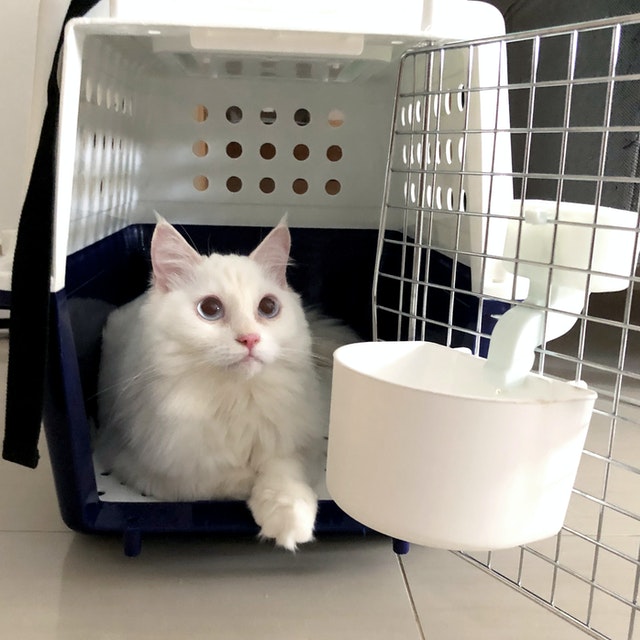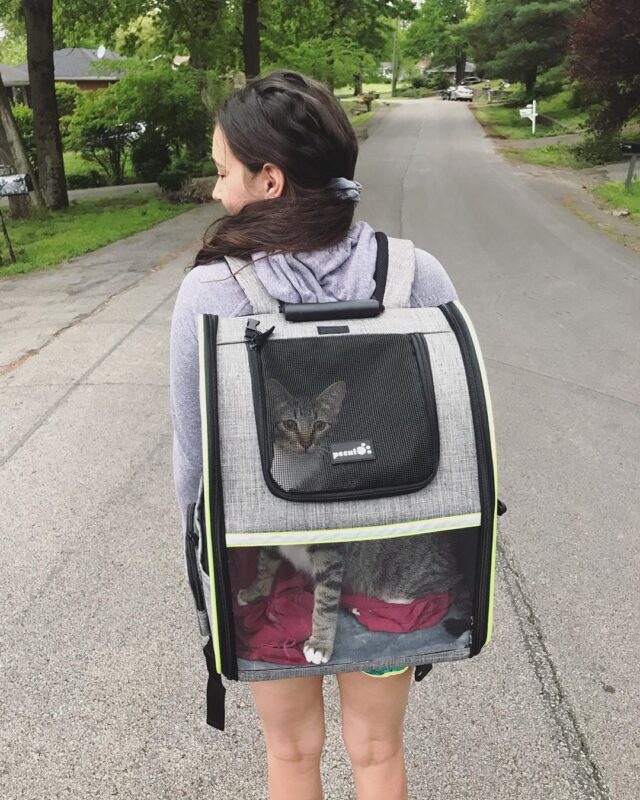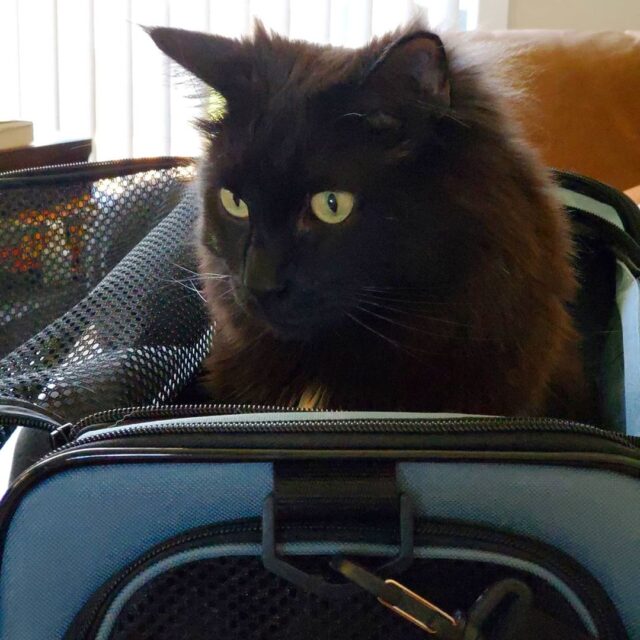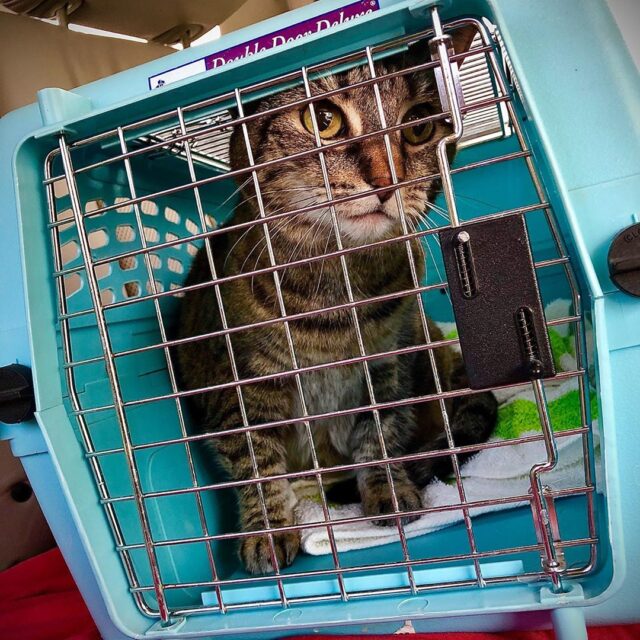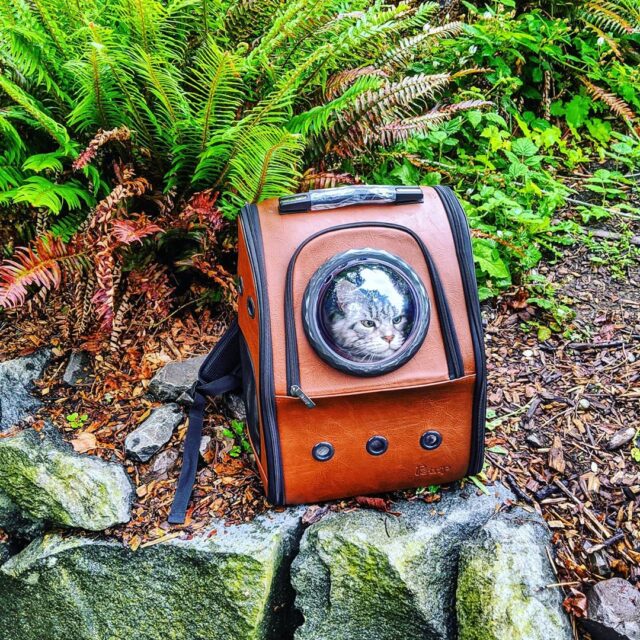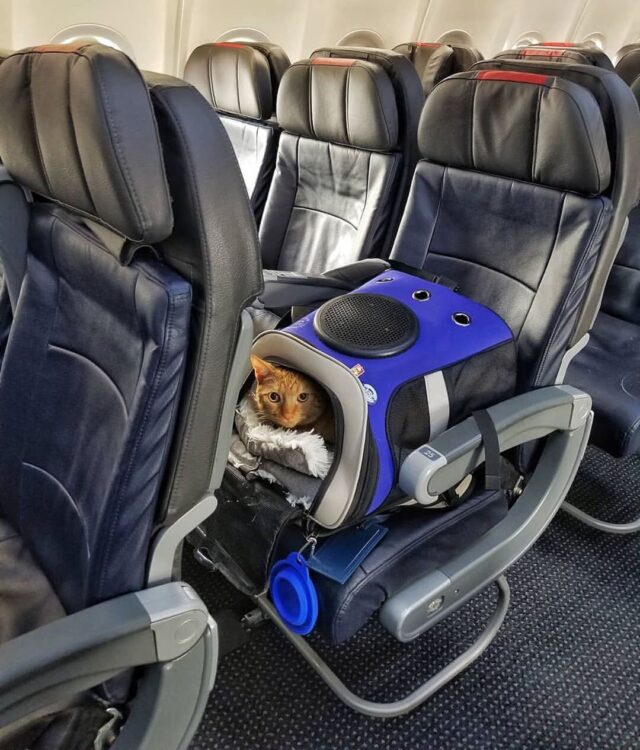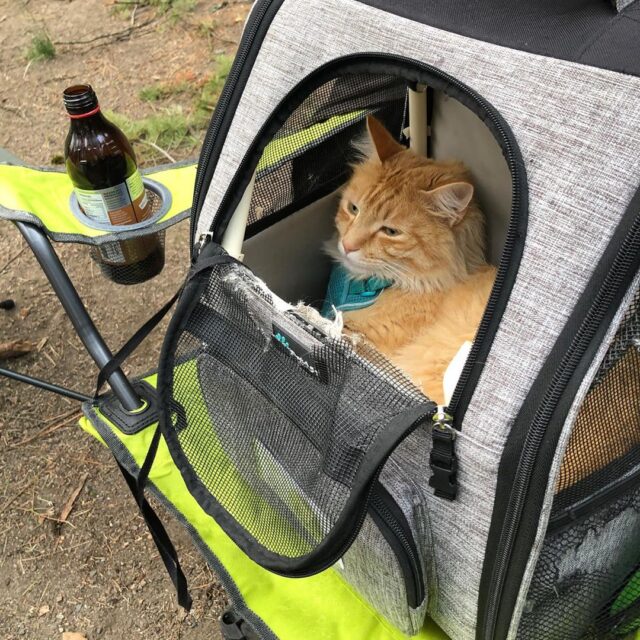Choosing a cat carrier can be a chore thanks to the variety of sizes and styles available in an ever-expanding cat market. But, don’t worry, knowing your cat will help you make the right selection when it comes to safety in travel. As a cat parent, you know best what travel your cat can handle, and choosing a cat carrier boils down to kitty’s needs when it comes to trips out of the house, whether it’s a run to the vet or a tropical holiday.
With this breakdown of different types of cat transports, you can make an informed decision on choosing a cat carrier that’s perfect for your kitty darling.
What to Consider When Choosing a Cat Carrier
Cat Size
One of the first things to consider when choosing a cat carrier is your cat’s size. A chonky cat requires a larger carrier than a little bitty kitty. And size truly matters when it comes to your cat’s carrier.
Have you ever tried to get a cat in a carrier that’s too small? Its a disaster for everyone involved.
Its true cats like small spaces, especially when facing an uncomfortable situation like going to the vet. But when crammed into a too-small box, the stress can intensify if movement is hindered inside what should be a safe space.
The correct size carrier allows your cat to fully stand up and turn around.
Don’t go to large though. Too much extra space can leave a cat feeling stressed out too.
PetMD also suggests, “If you’re going farther then your local vet’s office, make sure your cat’s carrier can accommodate food and water bowls.”
Ventilation
When choosing a cat carrier, ventilation is an important consideration. Make sure any cat carrier you’re considering provides adequate airflow. Ventilation mesh also allows your cat to view the world outside the carrier.
Security
In soft carriers and cases, be certain all openings have a locking zipper feature. For hard carriers, all doors should have secure locking mechanisms a cat can’t finagle open. It might also be a good idea when choosing a cat carrier to buy one with flaps that can block the world out if your cat seems overwhelmed.
Before purchasing, be sure there aren’t any spots in the carrier where a cat can pinch themselves. Make sure there are no defects in the material that can allow escape or cause injury.
Choosing a Cat Carrier Based on Travel Needs
After deciding the size range you’ll need for your cat, the next consideration is what you and your cat will need the cat carrier for. Obviously, you’ll be transporting a cat somewhere, but will the trips be short, only to the vet’s office and back home. Or will you be adventuring with your cat? Will your expeditions be out in the wilds or more hopping planes?
It used to be cat carriers came only in the basic plastic, hardtop variety with a metal cage-style door. But now choosing a cat carrier is a lot more fun thanks to cat lovers demanding variety for their feline besties. Let’s view the types of carriers available and what different functionalities they serve.
Hard Top Plastic Carriers
Good for car rides to the vet or a cat scared during long road trips, hard carriers are the way to go. Many cats don’t like to travel, so the security of the hard walls around them can help them feel more at ease about a situation they strongly don’t like.
Often made of plastic, hard carriers come with a choice of front-loading or top-loading doors. The hardtop of the front door variety often unclips, allowing the top to be removed from the bottom for easy loading or unloading of a cat. But then you have to put the top back on and typically line up the door with the two pieces. You have to move quick if your cat is trying to escape. If taking apart the carrier or easing the cat in the front door doesn’t work for your kitty, then perhaps consider a top-loading variety.
According to TravelWithYourCat.com, “Generally, cats prone to anxiety or aggression when they travel — scratching, clawing and biting, for example — will do better in a hard carrier.”
And for difficult cats, top-loading carriers may be the best bet as its easier to examine or pet your cat by opening a door on the top rather than the side.
While hard carriers are good for cats who don’t travel well, they do have a few disadvantages. They aren’t as comfy as soft carriers, they don’t store easily as they don’t fold away, and they tend to be heavy and bulky.
Soft Cat Carriers
Fabric cat carriers can be good choices for the rare cats who enjoy travel or at least remain calm. Cat parents are more than aware of the damage cat claws and teeth can do to any type of fabric, so a cat at ease with travel is better suited for the soft-sided carriers when it comes to the destruction factor.
Soft carriers provide better comfort thanks to cushioned inserts and may prove the better option if your cat will be in the carrier for long stretches of time, like extended road trips or flights.
Plus, soft cat carriers often come with a shoulder strap for easier carrying. Pockets for food or documents leave your hands free for other things, like handing your cat treats for being so good!
In the case of storage, fabric carriers fold down for easy stowing, but cleaning and odor removal are a bit more a challenge.
Cat Backpacks
Growing in popularity with adventure cats and their parents, cat backpacks are great for the duo on the go. While their humans stroll or cycle, cats can feel secure inside a cat backpack while watching the world from the wide views offered by this type of carrier. And though felines can get heavy in their carriers, wearing a two-strap backpack will distribute the weight across your shoulders rather than one shoulder or in your hand. This means you and your cat can add extra miles to your hike!
Some cat backpacks are quite similar to soft-side carriers except that they wear like a backpack instead. But modern trends have given rise to cat backpacks with large viewing bubbles. These bubble backpacks look as cute as they do futuristic and your cat will enjoy jetting around in such fashion and function.
Choosing a Cat Carrier for Flying with Your Cat
When choosing a cat carrier for flying, be sure to choose a carrier that fits all requirements for in-cabin animal transport. If it can be avoided, you don’t want your cat flying as cargo or checked baggage. Keeping your cat close will be better for any travel anxieties your cat might experience.
Here are some general requirements for carriers on flights:
- Hard or soft-sided carrier that must fit below the seat. And while hard or soft is allowed, choose a soft option as fabric carriers can more easily slide beneath a seat.
- Cat must be able to stand, sit, and turn around easily within the carrier.
- Your carrier should be crafted of waterproof material.
- Adequate ventilation is a must, be sure 2 or more sides offer ventilation mesh.
- Fully-working zippers that securely close the carrier.
The carrier will count as a carry-on, so maybe choosing a cat carrier with pockets would be a good idea.
Check your preferred airline for their exact carrier requirements.
Help Kitty Embrace a New Carrier
Cats can be dicey when it comes to new things, but with a few tips and tricks, you can help them enjoy their new ride!
PetMD offers tips to help your cat acclimate to a new carrier:
- Begin carrier acclimation young. The sooner cats and kittens get used to the idea of a carrier, the easier getting them in it will be.
- At least a full day before using the carrier, place it in your house somewhere near comfy cat spots. Throw one of their blankets inside to help fill it with scents familiar to your kitty.
- Treats, toys, and catnip are always great tools to convince a cat to check something out.
- Remain calm and patient. Any new endeavor with a cat moves slow. Felines aren’t big fans of change so our peace and willingness helps them acclimate.
By understanding your cat’s needs and comfort with travel, choosing a cat carrier comes down to how best to keep your cat happy in what can be a difficult situation. And as a dedicated feline enthusiast, you already live to please your cat!
Feature Image: @indianajoneskat/Instagram


